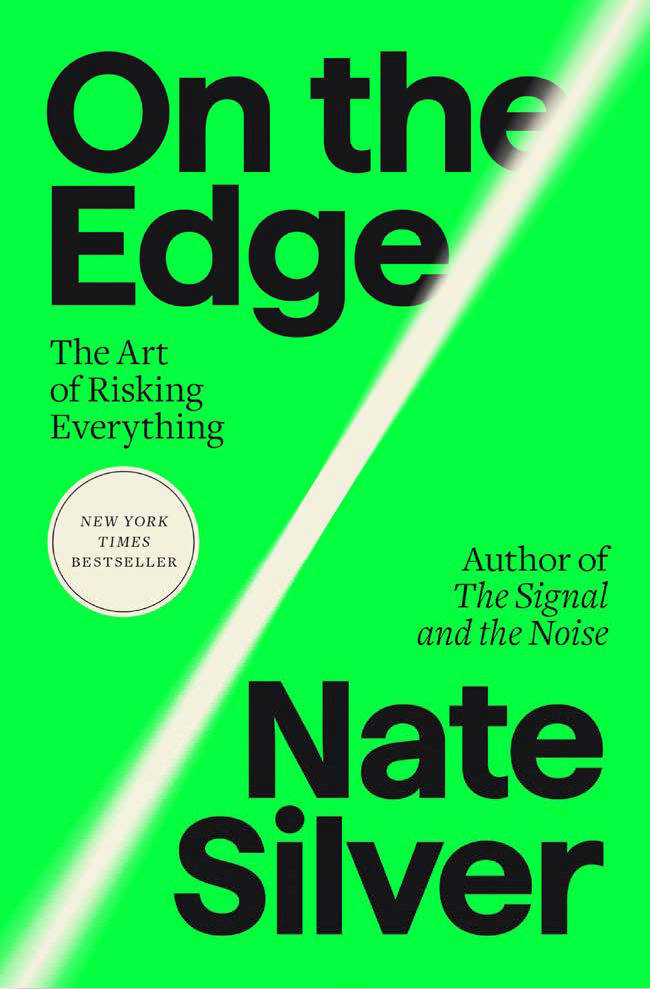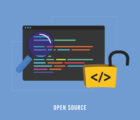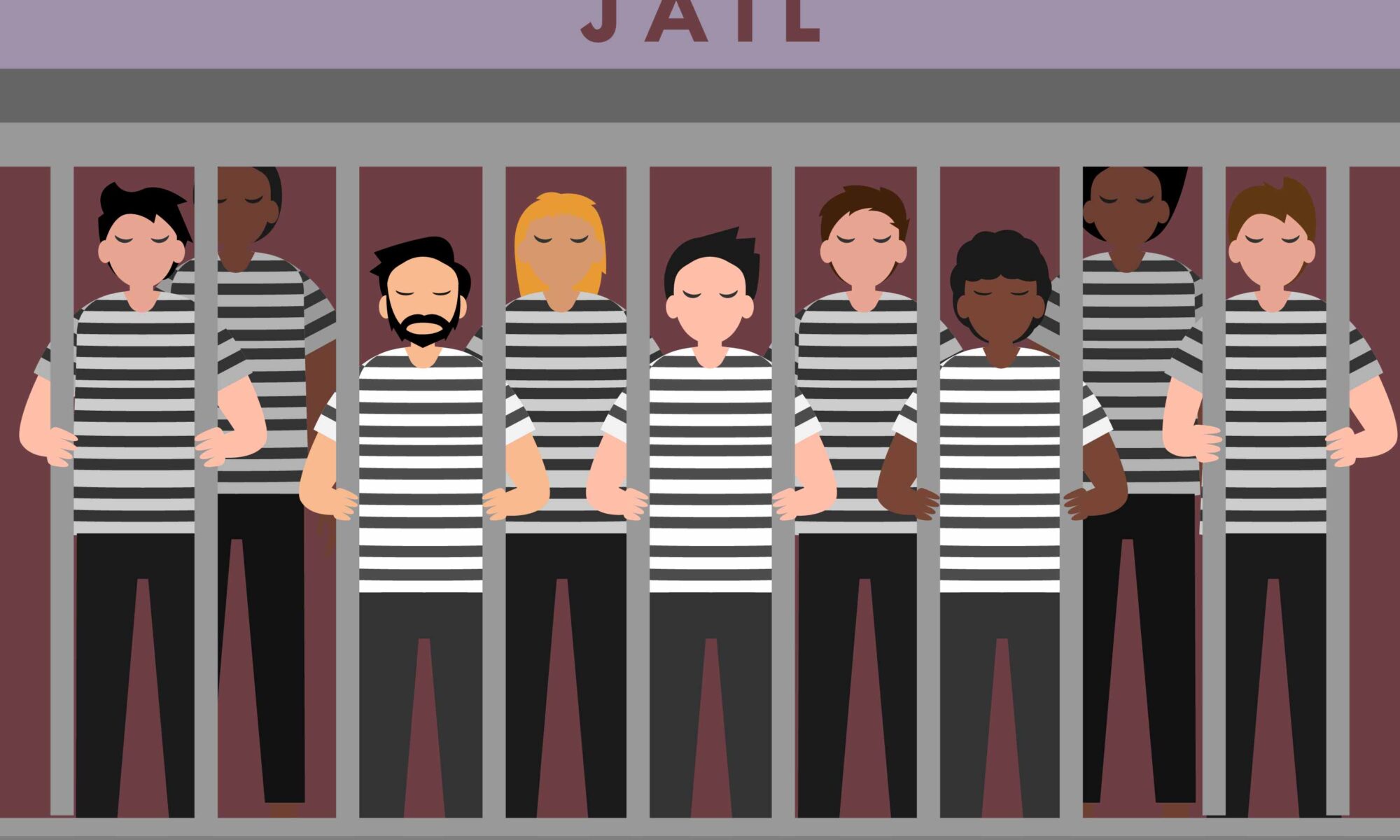
On the Edge: The Art of Risking Everything By Nate Silver, Penguin Press, 2024, 576 pp, $35.00.
Before she passed away too young, my friend and fellow actuary Terri Giunta would tweak overly bold underwriters: “We don’t take risks. We manage risks.”
Election modeler and author Nate Silver could have used Terri’s counsel as he wrote On the Edge: The Art of Risking Everything. The book tries to show how a specific set of risk takers have come to dominate gambling, then Silicon Valley and next, perhaps, the world.
Silver is best known for developing the website fivethirtyeight.com, where he forecasts presidential elections by building state-by-state analyses into electoral college projections. He sold off the fivethirtyeight brand but continues projections on his Substack. His well-received first book, The Signal and the Noise: Why So Many Predictions Fail — But Some Don’t, described how models revolutionized areas as diverse as baseball and climate change.
On the Edge focuses on poker. Silver is an excellent player, and he asserts the game’s experts emblemize a breakthrough in risk-taking. They exploit any hand in which they have a positive expected value (+EV in Silver’s parlance).
He argues this approach dominates Silicon Valley, venture capitalism and has counterparts in philanthropy and philosophy. Silver spends the first half of the book explaining +EV poker strategies, then uses poker metaphors to explain just about everything in the second half of this pretentious, 500-page work, from crypto-fraud to artificial intelligence.
But these poker stars aren’t risk takers, as my friend Terri could have pointed out. They are risk managers. Most actuaries could tell Silver how.
Gamblers have a model of Poker World and like modelers everywhere, they face model risk, parameter risk and process risk. Poker is easy to model — 52 random cards dealt in the same manner with a fixed hierarchy defining success. The parameters — the odds of winning at any point — are well known and stable.
Gamblers do face process risk, but it’s not too hard to manage. When odds are good, they bet a lot. When odds are poor, they don’t.
But you already knew it. You might not be a gambler, but you’ve heard “The Gambler.” Kenny Rogers explored the strategy in a three-minute song and still had time for some whiskey, a cigarette and advice on when to count your winnings (“when the dealin’s done”).
For Silver, this is deep stuff. He explores poker as one does a lover’s curves, showing how gamblers exploit +EV opportunities.
Well, fine. Risk management is a terrific way to view the world. Insurers have done it for hundreds of years: Embrace the risks you understand; shun the rest.
Insurance, though, doesn’t merit inclusion in the special place Silver and his risk experts occupy, which he calls the River. Riverians supposedly understand risk better than anyone and are using that advantage to dominate finance, philosophy and the future of the planet. He outlines it all in Chapter 1, which, I should add, is not the first chapter. There is a Chapter 0. The last two chapters are ∞ and 1776, in that order.
Pretentious? Sure. But so is a 30-page glossary that defines terms like YOLO. The book has a lot of such brosplaining; the obvious is assumed obtuse to non-Riverians.
The bro-flavor might be inevitable. The River is overwhelmingly white and male, and the book touches — sensitively — on the exclusiveness before dashing on, a whiff of Axe body spray trailing behind.
Actuaries and other risk experts seem to inhabit The River’s counterpart, The Village. Villagers shun quantitative models and are generally risk averse. Why actuaries would get lumped there, I’m not sure, but that’s the impression I was left with. Maybe I’m just mad because I think an exploration of managing risks large and small should have a small nod toward a 400-year-old industry that manages risks large and small.
But maybe he would put actuaries in his River. Hard telling — his River versus Village discussion is foggy. The Villagers he describes sound like slightly left-of-center D.C. Democrats. This means the union of the River set and the Village set does not exhaust the universe the two sets inhabit, omitting, for example, Republican insurance agents.
Silver does list the qualities of risk-takers (in Chapter 13, which is between Chapter’s 4 and 5), but they are qualities that help anyone. Here I have substituted the word actors where he used Riverians:
- “Successful actors are prepared.”
- “Successful actors have selectively high attention to detail.”
- “Successful actors have courage.”
- “Successful actors try to stand out, not fit in.”
Maybe that’s his point. Successful people are the ones who take risks. But one can flip the reasoning. Silver could also be identifying the traits of any successful person. Maybe you don’t need to be a risk taker to be successful. Maybe you need attention to detail and the other qualities Silver lays out. A lot of Villagers have them, Republican insurance agents included.
Silver has written two books — a fun one about the gambling world and a fuzzy one about the deeper underpinnings of the world that he says Riverians dominate. Silver believes that you need to understand the former to understand the latter.
I don’t think the poker metaphor works. I think it illuminates his own mind more than the reader’s.
On the Edge can be frustrating. There’s a lot of interesting stuff, like a full examination of sports betting. Point spreads are guided by computers but actually set by back-office geeks who tweak model results for real-time activity like player injuries, then refine them by nudging the line toward bets by gamblers they’ve identified as the sharpest.
And Silver is an engaging, intelligent writer. Through his connections and renown, he got access to a colorful cast. He even got Samuel Bankman-Fried to sit for a handful of interviews while Bankman-Fried was on trial for running a multibillion-dollar cryptocurrency fraud. (Bankman-Fried is serving a 25-year sentence.)
He makes a good case that the +EV mentality that drives poker players and venture capitalists can run amok in characters like Bankman-Fried, who Silver posits would literally bet the fate of all life on earth to win a dime. Silver shows +EV strategies are fine for playing poker but creakier for endeavors like charity or philosophy, where it is hard to determine what +EV should mean.
For Silver, it’s all a slow windup to a dramatic final pitch: Should we embrace AI and its risk of catastrophic societal collapse, or, in his mixed metaphor, “press the stop button” or “tap the brakes?” After 459 pages meandering through metaphorical swamps and rivers, through Vegas poker glam, Ponzi schemes, sports and philosophy, his conclusion seems facile. He knocks it out in a paragraph.
A slightly deeper foray into statistics might have helped. A simple discussion of finance would have shown Silver to be a better NBA gambler than he might have thought. (See sidebar.)
To an actuary it seems obvious: Bet-it-all bros like Bankman-Fried harp on expected value, but they ignore the probability of ruin. Those bros aren’t risk managers. They are risk takers.
My friend Terri knew that.
Jim Lynch, FCAS, MAAA, is retired from his position as chief actuary at Triple-I and has his own consulting firm.
Betting on Basketball
Apart from his main job —modeling election projections — Nate Silver is an active gambler. He finished in the Top 100 at the World Series of Poker Main Event in 2023.
In On the Edge, he describes dabbling in National Basketball Association bets in 2022-23. He considered it a failure, making $5,242 on bets of $1,809,006, a “paltry 0.3% return on investment,” he writes.
But I think he did quite a bit better than he lets on.
Most important, he didn’t invest $1.8 million. That is how much he bet. A lot of those bets were with money he had previously won.
The book displays a chart of his total winnings by day. It takes a random walk with positive drift, as you might expect. At one point he is up $40,000 then falls back to about $7,000, then back up to $65,000, then back down. In seven months, he was only in the red for about two weeks.
I think he needs to look at how much capital he needed to outlast losing streaks, and that amount is way less than $1.8 million. For a rough guess, you could say he needed twice as much as he was ahead at peak, which would be about $65,000 x 2 = $130,000.
That would make his return on equity $5,242/$130,000 = 4.0% in seven months. And he would still make investment income on the $130,000 capital, which he barely touched. (He’d also make investment income on the amount he was ahead at any given moment, but I’ve ignored that.) And 4% annualized yields about 2.3% across seven months. Together, that’s 6.3% return on equity, or 11% annualized — pretty good for a hobby.
It still might not make sense to keep gambling. Silver chronicles the challenges. Sports books limit your bets as you demonstrate success. You must stay current on player injuries and other trends, and that is a grind. And there are costs — building a model, acquiring data and developing output — that I don’t think he quantified in the book.
A better look might not have changed Silver’s mind, but it would have helped him understand the income he forwent.













